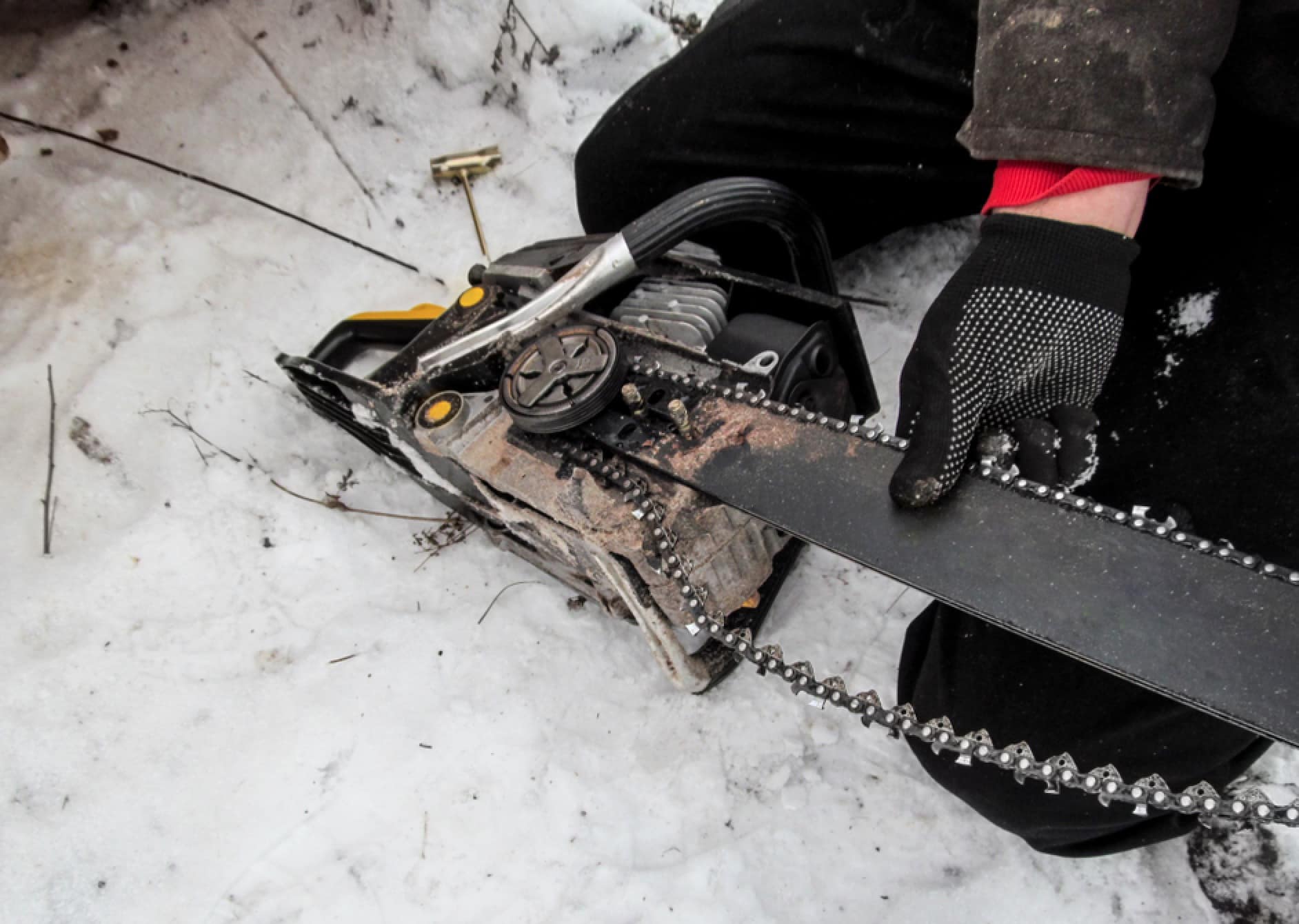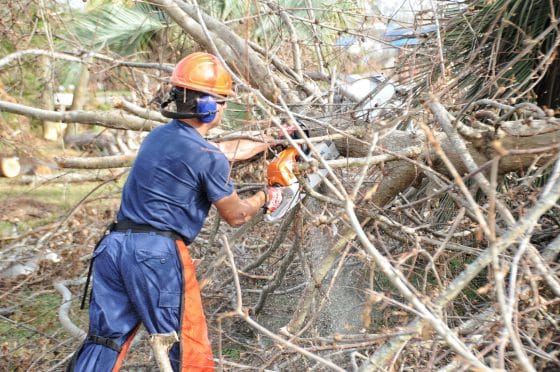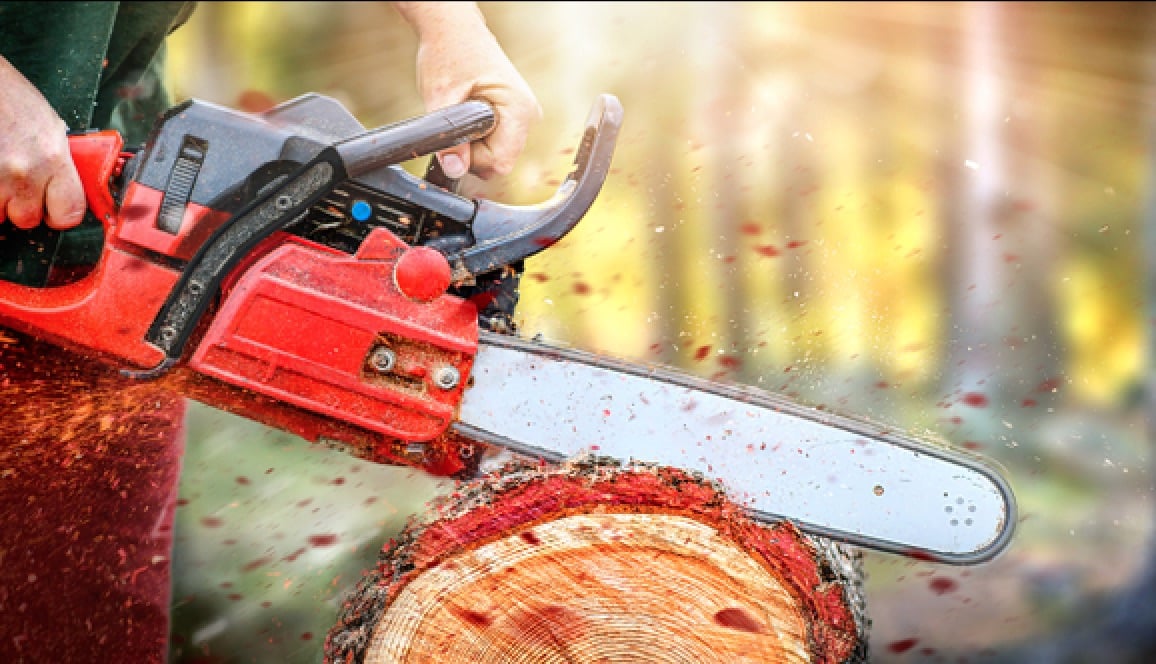| Question | What Is the Right Chainsaw Blade Direction? |
| Answer | Chain Must Face the Right Way |
| More Info | 1. Top of Bar: The sharp edges of the cutters (teeth) on the chain should face forward. 2. Rotation Direction: When operating, the chain moves clockwise, so the cutting edge of the blade should be leading. 3. Safety and Efficiency: A correctly installed chain ensures efficient cutting and reduces the risk of accidents. |
Chainsaws are power tools that are indisputably very handy. However, they need a great deal of care and maintenance. Any error with the chain blade direction can cause accident both to the user and those around you.
In fact, according to the CDC, over 36,000 persons are treated for injuries related to chainsaws annually. The statistics are not meant to scare you but to ensure that you are using your chainsaw correctly and giving it the necessary maintenance.
In this article, we will offer all the necessary information you should know about the direction of your chainsaw.

Why You Should Not Put the Chainsaw in the Wrong Direction
It is crucial for the chainsaw chain to run in the right direction. If the chainsaw chain is placed backwards, usually, it will not cut and then the cutters will be facing you and that can be dangerous for you. There are other issues associated with placing the chainsaw chain in the wrong direction, including:
- Waste of bar oil – typically, the bar oil is kept to be used after certain projects or tasks are completed. But, with a wrong blade direction, a lot of the bar oil is wasted and consequently harms the chainsaw.
- Stress on the guide bar – a wrong alignment of the chainsaw blade will cause you to apply a considerable amount of stress on the guide bar as you try to force the chain into the wood. This may end up damaging the guide bar.
- Motor deterioration – with wrong chainsaw chain direction, you will need to put so much pressure to cut the woods. This will affect the chainsaw and the lifetime of the motor will gradually decrease.
- Burnout Clutch – after starting a chainsaw, it is normal to keep pressing down the clutch. But, if the chain is wrongly placed, it can cause the clutch to burn out, causing the chainsaw to stop working.
Assessing If the Chainsaw Chain Direction Is Right
As aforementioned, using a chainsaw chain in the wrong direction can affect the functionality of your tool, and pose risk to your safety. But, how can you be sure you have installed the chain in the right direction? Here are tips to ensure the chainsaw chain direction is right:
Check from the top view
From this view, you can see two different blades in the chain- one is sharp and the other is dull. Regardless of the model of the chainsaw, the blade always rotates from the clockwise direction. Hence, the sharp edge of the blade should be facing the clockwise direction (the direction opposite the chainsaw body or motor).
Check from the side and front view
Suppose you are checking out from the side and the blade is in your right-hand while the engine is in the left-hand side, then the chainsaw blade direction should be from left to right. That is a clockwise direction.
Now, check from the front side. If the blade should be coming from the upside to the downside, otherwise it is in the wrong direction.
Check from the bottom view
This is the opposite of the top view. So, if the blade is installed correctly, then the sharp edge should be facing the body or engine.
Check the drive link
Inside the chain, you will find the drive links that sit in the groove of the chain bar. They are drawn in the clockwise direction by the sprocket. Similar to the sharp edges, the links should be facing forward on the top side of the chain.
Installing the Chainsaw Blade Direction Correctly
You have successfully checked the chainsaw, and hope the blade and chain are installed correctly. But, if by any chance, it is not in the right direction, you can easily reset it by following these steps:
- Fix the bar – to reset the chain; you need to attach the chainsaw bar correctly. This can be done by removing the bolt, and adjusting the bar to fit in its exact position. Put the chain on the bar and ensure that the bar get the perfect length according to chain fitting requirements, otherwise the chain can come off.
- Check the chainsaw blade direction – you are probably replacing or resetting your tool because of its faulty blade direction. So, pay close attention to details to ensure that you mount the chain properly. That will allow you to run the chainsaw in the right direction without disruptions.
- Tighten the blade – Finally; you need to tighten up the chain so it can run properly. Just be careful in the procedure- do not make it too loose as the chain can come off making it dangerous for you. Similarly, if the chainsaw is too tight, it can hamper the working condition of the power tool, leaving it ineffective.
How do you find the correct replacement chain for your chainsaw?
At one point in their lifespan, power tools need replacement for maximum functionality. However, it can be challenging to find the correct replacement chain. Fortunately, you can incorporate these parameters before buying a new chain.
- The pitch – this is the distance between two consecutive chain links divided by two. The pitch size depends on the type of your chainsaw- heavy duty ones require a large pitch. So, ensure that your new chain fits the exact pitch to avoid ineffectiveness. The common chainsaw pitch sizes include ¼”, 0.325”, 3/8”, 3/8” low profile (Pico), and 0.404.”
- The gauge – the chainsaw gauge is the measurement of the depth of the groove is on the guide bar. A higher gauge usually means the chain will be heavy and are designed for demanding applications like rescue, military, or industrial. Typically, the standard gauge sizes are 0.043”, 0.050”, 0.058”, and 0.063”.
- The Drive link count – the number of drive links offer you the information on how long the chain is. It will also help you assess if it is going to fit into your bar or not.
The take-home message
A chainsaw is one of the most widely used power tools in the world. Even so, it requires proper installation, care, maintenance, and parts replacement. By using the right techniques, you can easily and quickly get the correct chainsaw blade and chain direction for maximum functionality.

